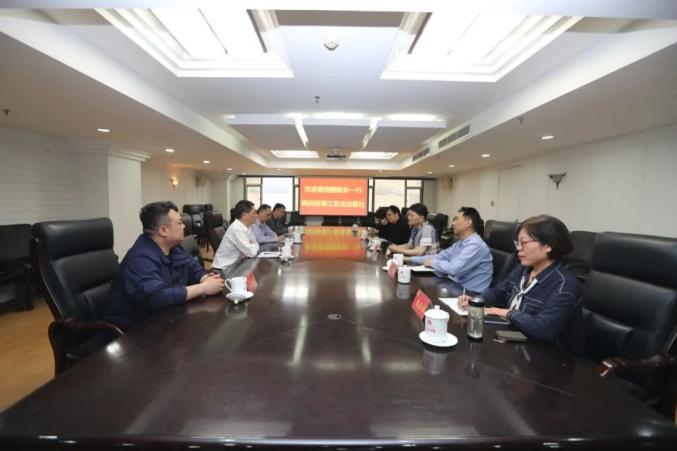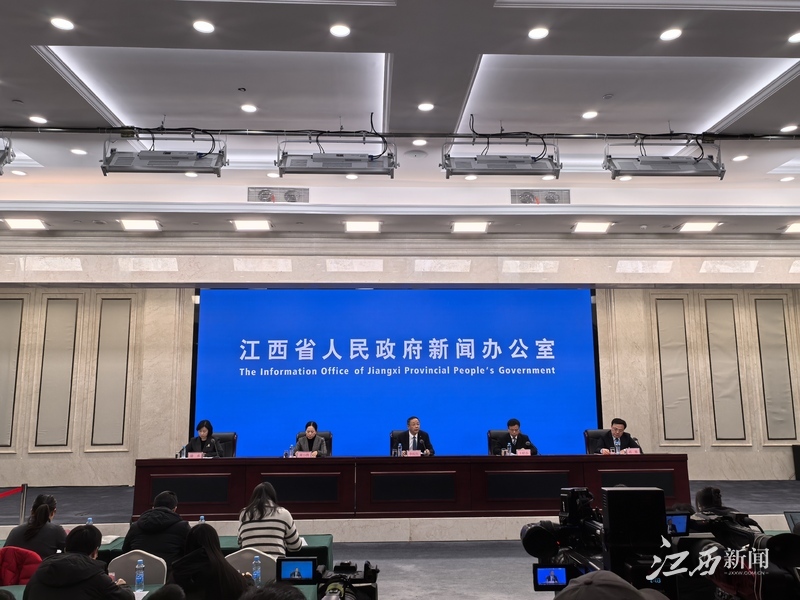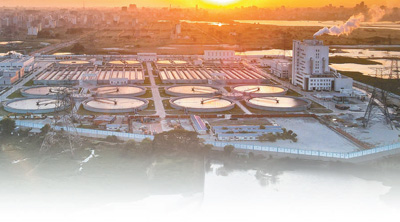Culture Takes Root And Benefits The People - Zhejiang Continues To Promote The "Eight Projects" Series Of Reports On "Eight Projects" Of Cultural Construction In 20 Years
Culture Takes Root And Benefits The People - Zhejiang Continues To Promote The "Eight Projects" Series Of Reports On "Eight Projects" Of Cultural Construction In 20 Years
Through the "government guidance social participation" model, with art academies, cultural centers (stations) and other literary and artistic volunteers from all walks of life as the main body, we will create a multi-point, high-frequency and mobile literary and artistic landscape, allowing literature and art to go out of the theater and the walls, and light up the streets and alleys like a spark.
A heavy rain came unexpectedly on the Xizi Bridge by West Lake in Hangzhou. An ordinary shopping mall air corridor suddenly transformed - the giant naked-eyed 3D screen slowly opened like a stage curtain, and the music of the Happy Chinese Style Orchestra flowed out. Traditional arrangements collide with modern notes, instantly sequestering the hurried footsteps under the bridge. The music blooms in the rain, and people stop to listen. This "blind box concert" without previews and no tickets makes Hangzhou City unique and charming on rainy nights.
This is a daily glimpse of the "Literary and Art Beauty" project in Zhejiang Province - through the "government guidance social participation" model, using art academies, cultural centers (stations) and other literary and artistic volunteers from all walks of life as the main body, creating a multi-point, high-frequency and fluid literary and artistic landscape, allowing literature and art to walk out of the theater and the walls, and illuminate the streets and alleys like a spark. "The song just now is so grand and heart-catching, I stopped immediately, shocked! Like it!" said Zhang Wanting, a citizen of Hangzhou.
Meet the fragrance of books at the corner. In the "Xijian West Lake" cultural reception room in Dongshannong Community, Xihu District, Hangzhou, Zhao Ying, a citizen, is enjoying the weekend. "Reading books and exhibitions, I always stay here for most of the day. When my friend comes, I also like to choose this "living room at the doorstep" to sit and chat." Such a new cultural space makes the community warmer. Data from the Hangzhou Municipal Bureau of Culture, Radio, Film and Tourism shows that in 2025, Hangzhou plans to add 700 new "15-minute quality cultural life circle", 50 urban study rooms, and 90 reading stations. This is a Hangzhou exploring a diversified model of public cultural services using a new reading space as a carrier, and it is also a solid measure to benefit the people in culture.
On New Year's Eve in 2003, on Nanshan Road, Hangzhou in the cold rain, Xi Jinping, then Secretary of the Zhejiang Provincial Party Committee, held an umbrella to survey. Where is the location of Zhejiang Art Museum? Faced with the controversy that "every inch of land by the West Lake" is considered economic benefits or social benefits? Xi Jinping made the decision: "It is built by the West Lake." Today, this art museum that blends white walls and black tiles and modern glass curtain walls hold more than 40 fine exhibitions per year, and the audience is full of views.
In July 2003, Xi Jinping proposed to "continuously meet the people's growing multi-level spiritual and cultural needs and promote the all-round development of people" as a major and urgent task in Zhejiang's modernization construction.
In 2009, large-scale provincial facilities such as the New Museum of Zhejiang Natural History, Zhejiang Art Museum, and Zhejiang Provincial Museum Wulin Hall District (Zhejiang Revolutionary History Memorial Hall) were built one after another. A number of landmark key cultural facilities such as the Wenzhou Grand Theater, Huzhou Grand Theater, Ningbo Museum, and Liangzhu Museum were built across the province, effectively improving the appearance of cultural positions in various places. By the end of 2024, Zhejiang Province will build 102 county-level and above library cultural centers, 1,366 township comprehensive cultural stations and 18,633 rural cultural auditoriums to achieve full coverage.
Zhijiang Cultural Center is like a shining pearl. It is one of the largest provincial public cultural clusters in my country. It integrates libraries, museums, intangible cultural heritage museums, literary museums and public service centers. It is the golden business card of "Cultural Zhejiang".
Among them, the Intangible Cultural Heritage Museum can be regarded as a model for "technology to bring tradition to life." Under the theme of "China Time·Zhejiang Days" in the first floor lobby, the huge 24 solar terms copper plate installation is the treasure of the museum. The copper plate flows with real time, and the corresponding solar terms are accurately lit up, reflecting the paper-cutting of the solar terms projected by the ground. In the dialect story interaction area, wearing headphones can hear folk stories told by Wu Nong soft words, or recording your own voice to participate in the continuation of the legend. A giant ancient ship model built according to the ancient method and can truly go into the sea silently tells the ingenuity of intangible cultural heritage.
"The intangible cultural heritage museum is really big, and I feel like I can't finish it. Half a day of watching the exhibition and half a day of doing handicrafts is not enough." A visitor sighed to the reporter.
During the summer vacation, the service hours here are extended from "9 to 5" to "9 to 9", which greatly facilitates tourists.
The Intangible Cultural Heritage Experience Center is a popular gathering place for Zhijiang Cultural Center. How to make the "high-end" intangible cultural heritage skills fly into the homes of ordinary people? The operator and inheritor took great pains to do it. Song Chao, the third-generation inheritor of the national intangible cultural heritage umbrella production technology (West Lake silk umbrella), talked about their ingenuity and disassembly skills, "reduce the dimension" of the complex umbrella brushing technology to simple plane operations, and reduce costs with spray paint cloth. The finished product is a decorative painting, which is practical and beautiful, so everyone is naturally willing to take it home.
Why did young managers choose to stay at Zhijiang Cultural Center? Song Chao explained the reason: "The platform is accurate, faces the market directly, and has strong policies."
Zhu Jingbing, general manager of Zhejiang Cultural Space Development Co., Ltd., Zhejiang Cultural Investment Group, added: "The average age of young manager team members is only 28 years old. They stimulate creativity through market-oriented mechanisms, allowing them to find value in cultural confidence."
In October last year, the 2024 Youth Film Week (Zhejiang) was held in Hangzhou. The opening ceremony was themed "Chasing the Waves", which symbolizes the surging development and infinite possibilities of film art and young filmmakers. Film Week Venture Capital has created a real interaction between youth and the film industry through the first opening of the exclusive track for the 2000s, the first prize is up to 1 million yuan, and the first prize is shortlisted for the top 30. It can participate in training camp courses, integrate the industry's full-chain industrial services, and give full play to resource advantages.
The movie "The Sound at Night" which won the million-yuan award shows some of the situations and current situations of rural women in China from the perspective of a child. Interestingly, the two main creators of the film were colleagues of the security team of the Beijing Film Academy. They were on duty at night and took classes during the day. Finally, they passed the exam and became classmates, realizing their dream of film.
Culture in Zhejiang not only belongs to the neon lights of the city, but also grows among the fields of the countryside.
The clouds and terraced fields in Lishui were once "hidden in the deep boudoir and no one knew them." Photographer Zheng Jianwen knocked on the mountain gate with a painting "The Sea of Clouds and Terraces Along the Sun", attracting about 100,000 photography enthusiasts every year. The beauty of terraced fields is superimposed on She Han culture and agricultural civilization, which has given birth to an international artist's fieldwork and creation base. The essay "Clouds and Terraces" by writer Zhang Kangkang has also been on the college entrance examination paper. Art turns stones into gold, and more than 180 B&Bs have emerged around the terraced fields, 170 farm houses have been revitalized and used, and more than 5,000 acres of terraced fields have regained their vitality, driving nearly one-third of the county's income to increase income. The per capita income of surrounding farmers has jumped from 10,000 yuan in 2016 to more than 30,000 yuan. In 2024, Yunhe Terraces became the first national 5A-level scenic spot in the country. "Thanks to the photographer for making terraces, we have a tourist meal and become photography tour guides!" Ji Yunjin, the operator of the first local photography-themed homestay, sighed.
According to a relevant person in charge of the Lishui Federation of Literary and Art Circles, the local area relies on the application of national, provincial and municipal cultural and art fund projects and the support and rewards for literary and artistic works, and focuses on major themes, encourage and guide artists to take root in the fertile rural soil, create rural literary and artistic works, and focus on literary and artistic works on the theme of "agriculture, rural areas and farmers" in creative support and rewards. The "Artist Village Plan" has allowed more than 200 artists to take root in Liandu, Songyang, Suichang and other places in Lishui. Art schools, studios, and rural museums have emerged like mushrooms after a rain. Cultural commissioners and the "Youth Beauty Team" jointly draw up great changes in the mountains and towns.
After 20 years of deep cultivation, the "Eight Projects" of Cultural Construction have transformed from a blueprint into the cultural landscape of the river, becoming a vivid footnote to benefit the whole people and stimulate vitality. It is no longer a one-way output, but a vibrant symbiosis and growth. This carefully constructed chain of "benefiting the people-participation-innovation-inheritance" is like a deep and quiet water flowing, nourishing the river and making culture truly a source of life that everyone can enjoy and endlessly live.
China Youth Daily·China Youth Network reporter Tan Sijing and Jiang Yutong





